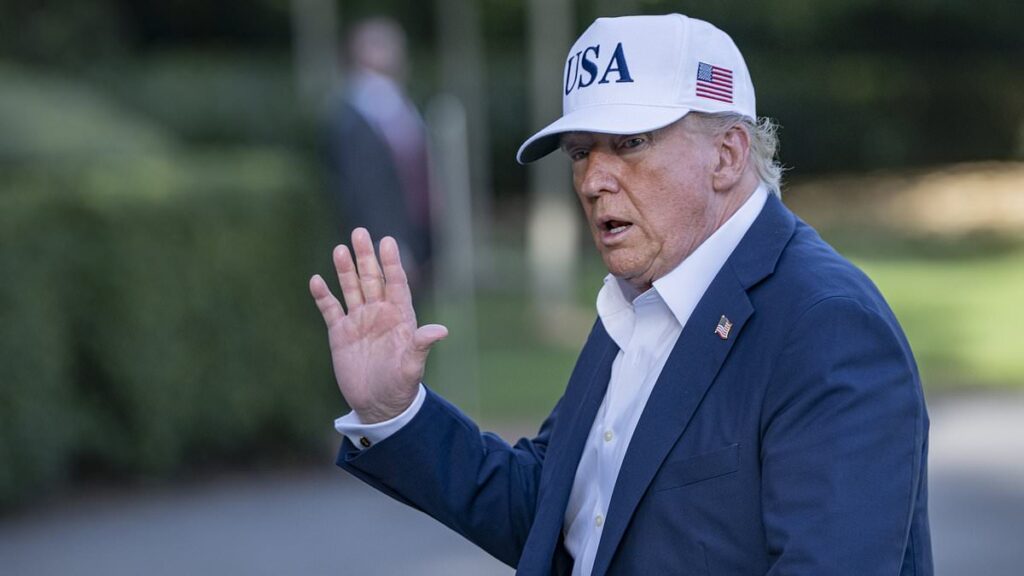While much of the world is focused on election campaigns and economic recovery, President Donald Trump has opened a new front in his long-running trade war—this time against two of America’s closest allies: Japan and South Korea.
In a move that sent global markets reeling, Trump announced new 25% tariffs on all goods coming from both countries, set to kick in on August 1, 2025.
A Blunt Message in Black and White
The tariff announcement didn’t come through a press conference or a tweet, but through two sharply worded letters sent directly to the leaders of Japan and South Korea.
Trump criticized both nations for their “unbalanced” trade relationships with the U.S., accusing them of benefiting far more than giving back.
In the letter to South Korean President Lee Jae-myung, Trump wrote:
“Starting on August 1, 2025, we will charge Korea a Tariff of only 25% on any and all Korean products sent into the United States, separate from all Sectoral Tariffs.”
He claimed the rate was still “far less than needed” to fix the trade gap and warned that any attempts to sidestep the tariffs—such as rerouting goods through other countries—would result in even steeper penalties.
U.S. Markets React Instantly
The financial markets didn’t take the news lightly.
The Dow Jones Industrial Average fell by 400 points, and the S&P 500 dipped nearly 1%, as investors scrambled to assess the fallout.
The uncertainty around future tariffs is now spreading across global supply chains.
A Mix of Praise and Pressure
In typical Trump fashion, the letters were not all fire and fury. He described the opportunity to trade with the U.S. as a “privilege” and referred to the letters as a “great honor.”
Despite the looming penalties, he framed the situation as a chance for both countries to participate in what he called the “extraordinary” American economy—just with higher costs.
The message to Japanese Prime Minister Ishiba Shigero mirrored the one sent to Seoul, both in tone and wording.
A Complicated History of Trade Ties
The decision to impose tariffs on Japan and South Korea comes despite their long-standing alliances with the U.S.
These are not just economic partners—they are nations the U.S. helped rebuild after World War II and the Korean War. In recent decades, American consumers have come to rely heavily on goods from both countries, including cars, electronics, and microchips.
In 2024, the U.S. ran a $66 billion trade deficit with South Korea and a $67 billion gap with Japan, largely due to high imports of vehicles and tech.
Tariffs Add to Existing Strains
Japan already faces a 25% tariff on cars, steel, and auto parts, plus an additional 10% base tariff on all imported goods.
The new measures will only escalate the cost of doing business.
And this is just the beginning. The White House is preparing to release more letters to additional countries, each spelling out specific tariffs.
That shift—from informal deal-making to written ultimatums—is shaking diplomatic circles and worrying trade partners.
Trade Officials Brace for a Busy Week
Commerce Secretary Howard Lutnick confirmed that the new tariffs will officially kick in on August 1, while Treasury Secretary Scott Bessent said negotiations are still happening, albeit under pressure.
“My mailbox was full last night,” Bessent said, adding that many countries have submitted new offers.
Top economic advisor Kevin Hassett struck a more diplomatic tone, telling CBS:
“The United States is always willing to talk to everybody about everything… There are deadlines, and there are things that are close.
Maybe things will push back. Maybe they won’t.”
From Liberation Day to Legal Fights
This is all part of Trump’s broader tariff campaign that began on April 2, when he dubbed the day “Liberation Day” and slapped a 10% tariff on all imports.
Some nations were hit even harder—with duties up to 50%.
After a wave of market panic, Trump paused those harsher penalties for 90 days, using the time to strike early-stage deals with the UK, China, and Vietnam—though none are finalized yet.
Trump’s trade team had set a lofty goal of “90 deals in 90 days,” but that target remains unmet.
EU Could Be Next in the Crosshairs
Meanwhile, Europe is watching nervously. Reports suggest Trump may soon hit the European Union with a 17% tariff on food exports and potentially a 50% tariff on all goods if no agreement is reached.
EU officials called the proposed food tax a major escalation, warning it could deal a heavy blow to the region’s agricultural sector.
Courts Push Back, but Tariffs Hold
Despite legal challenges, the tariffs remain in effect for now.
Two federal courts have ruled that Trump’s use of the International Emergency Economic Powers Act (IEEPA) to justify the tariffs may not be valid.
However, until the court battles are resolved, the tariffs stand.
What Happens Next?
With only days to go before Trump’s July 9 deadline, many countries are still scrambling to negotiate or appeal their cases.
Some may strike quick agreements. Others may retaliate.
But one thing is clear: Trump’s trade war is far from over, and the ripple effects are already being felt in wallets, markets, and boardrooms across the globe.

